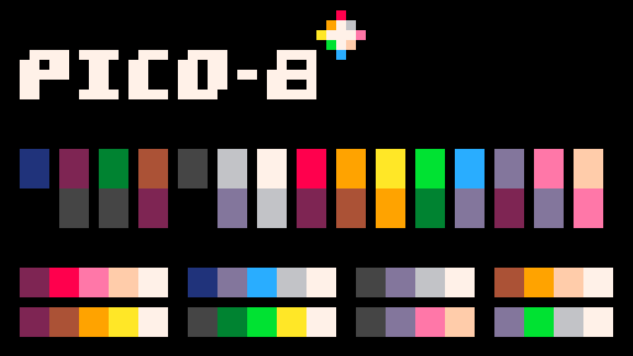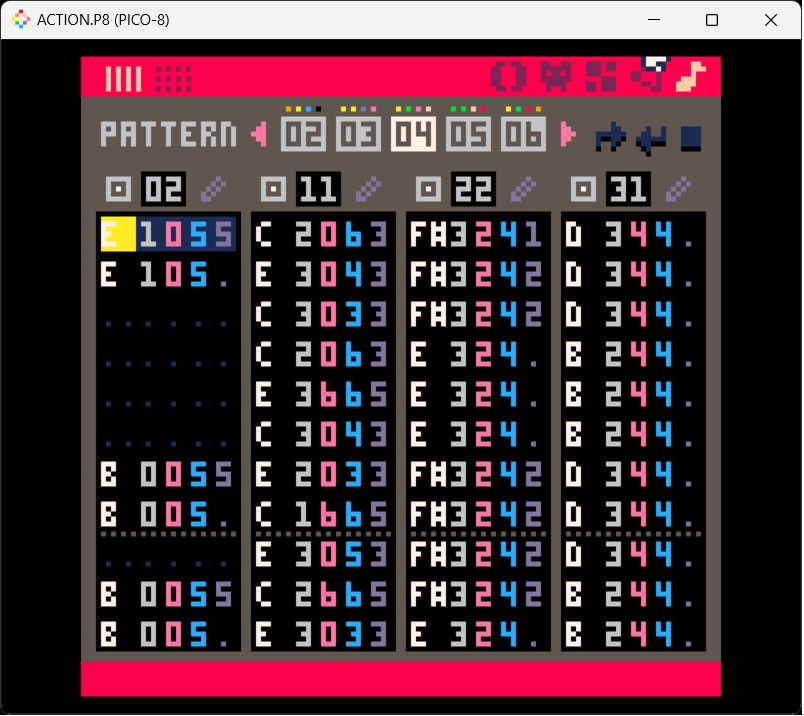
Born in the golden age of ’80s gaming, it was always my dream to become a real-life video-game composer. Now nearly one hundred years later, I’ve made that dream a reality with the help of PICO-8.
PICO-8 is a virtual console and game-making machine. The music editor looks like pic below. Instead of being read left-to-right like on manuscript paper, the music here is read vertically like Chinese or the Matrix. Does music move from side to side like a car, or does it cascade endlessly like rain? How does the trajectory of the musical engine dictate the character of the composition?
The PICO-8 is a very appetizing music-making machine. You can see two bars in a single snapshot with four instruments total, perfect to practice your four-part voice leading or minimalist acid-chip loops. The black background is preferred over white manuscript paper—musical notes hover over a black void of silence.
Just like real consoles, PICO-8 plays a boot-up melody when you open the app. The melody is a quick triplet of 3 tones—C, G, and F. Two intervals of fourths that move upwards. V to the I. A perfect cadence. Generally speaking, music wants to move up a fourth, like a chicken up a wire.
Compare this to the classic Game Boy boot-up sound. When you power on this fat grey brick with the spinach green screen, you’re treated to a flammy octave of C’s like a convenience store ding. Or in this case, a convenience store “blong.”
Music is infinite, so it’s nice to have some restrictions. The player will probably have to listen to your song a million times to complete the level. Sometimes the memory of the cartridge will only allow 16 bars per song. Game composition is all about writing the perfect short loop of music that won’t be too annoying.
Game designer Sourencho described what was needed:
Side note: I was thinking more about the music and I realized that for it to be “background”-y the changes that happen should feel like embellishments or variations on the base rather than “development” of the melody. That way it will feel like the music is changing but it’s not taking you somewhere higher or lower, or more important or climactic. Like if you stand in a forest the sounds are always changing because the wind hits different or a bird will start singing but the state of the forest isn’t changing dramatically as if a storm came through or a fire started. Static but with variation.
Beautifully stated. Better than I could do. I took it to mean an excessive amount of major seventh chords and constant modulations.
Anyway, here are a couple games I made music for.




